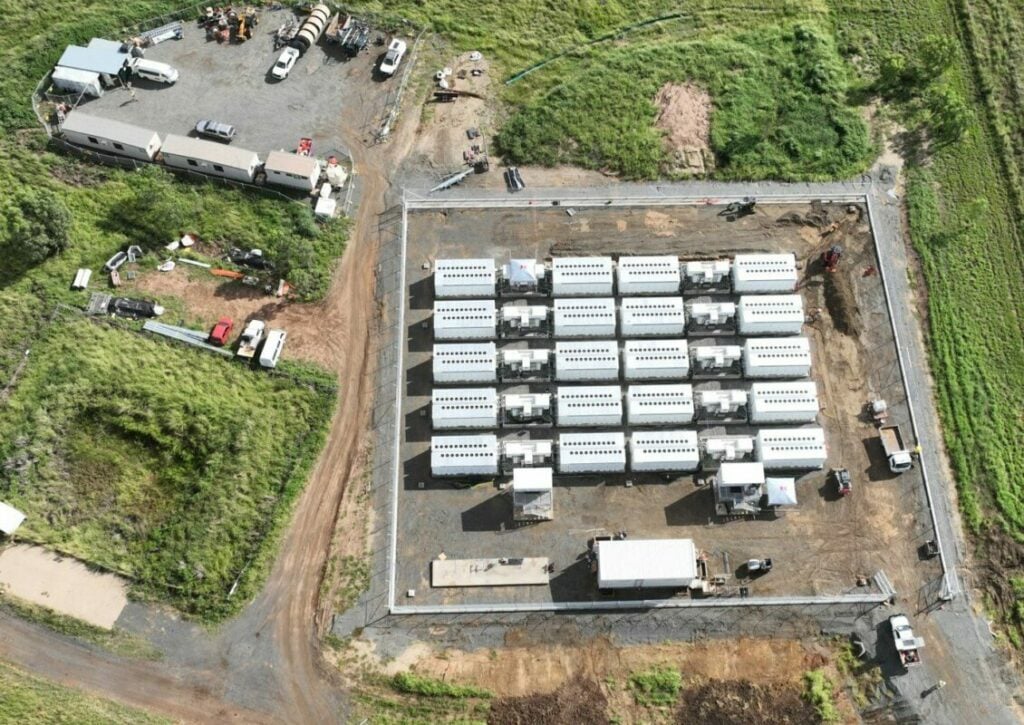
A reduction in price volatility has seen the battery energy storage system (BESS) revenue decrease by 40% in Australia’s National Electricity Market (NEM) month-on-month in March 2025.
Speaking to ESN Premium, Hatta Misra, a data analyst at UK-headquartered energy industry data platform Modo Energy, says: “The headline figure is that battery revenue decreased by 40%. That’s mainly because of lower price volatility as the country moves out of summer.”
Enjoy 12 months of exclusive analysis
- Regular insight and analysis of the industry’s biggest developments
- In-depth interviews with the industry’s leading figures
- Annual digital subscription to the PV Tech Power journal
- Discounts on Solar Media’s portfolio of events, in-person and virtual
Or continue reading this article for free
February 2025 experienced a surge in BESS revenue within Australia’s NEM, primarily influenced by market price volatility. Across the month, NEM-wide battery revenues averaged AU$107,000 (US$67,000) per MW/year, reflecting a 2% increase from January.
Misra explains: “In February, there were three days where energy prices went up over AU$10,000. That means a lot of ability for batteries and other peaking resources like gas to make money.”
Another significant impact on NEM revenue figures was the milder weather. With Australia having entered Autumn, Misra says there are fewer “unreasonably hot days” with more predictable, colder weather. The exception was on 15 March when New South Wales saw a spike in volatility, mainly due to an unexpectedly hot day leading to higher demand as air conditioning units were turned on statewide.
In fact, thanks to the extreme price periods throughout March, New South Wales managed to maintain or increase its average battery revenue figures.
“That [increase temperatures] did lead to some energy price spikes in New South Wales specifically, so while NEM-wide battery revenues decreased by over 40%, New South Wales batteries maintained or increased, in some cases, their revenues. This was because they were still exposed to these extreme price periods and were selling energy at over AU$10,000 per MW/hour,” Misra says.
Modo Energy said on its website that longer-duration batteries had higher potential revenue per megawatt throughout the NEM. However, batteries’ performance in capturing these revenues varied depending on operational strategies.
FCAS revenue makes a slight recovery
Another headline figure Misra is keen to highlight is the slight recovery in Frequency Control Ancillary Services (FCAS) revenue in March 2025. However, this was from an initially low base.
“Another headline figure is that FCAS revenues slightly recovered, but from a very low base. FCAS regulation and contingency made up 6% of total revenues in February. And then in March, they made up 15% because of lower energy revenues due to previously said reasons,” Misra explains.
“But it was still a relatively small part of [total] revenues. It’s not like in the past when they made up the majority. The battery market is increasingly being dominated by energy trading.”
Misra also explains how the uniqueness of Australia’s NEM, heavily dominated by variable renewable energy generation, is increasingly becoming an opportunity for asset owners to increase revenue, with price volatility helping achieve this.
“You have an extremely long tail in prices. I think that’s fairly common throughout the NEM. In other markets, you might have a pretty normal distribution of prices, with the median around AU$100 and the top 1% of prices around AU$1,000 because of the market’s structure,” Misra says.
“The NEM is extremely volatile because it’s increasingly dominated by variable renewable energy, plus the market structure has extremely high price caps. NEM generation assets really rely on these 30 minutes where prices are over AU$10,0000; that’s where they make the majority of their money. That’s why lower volatility leads to massive drops in revenue.”
Misra also explains that batteries in the NEM are often at a disadvantage compared to their international counterparts due to a lack of efficient optimisation. This has led to batteries not capitalising on price events and maximising revenue opportunities.
“Optimisation is essential, and you could make much more money,” Misra says.
Optimisation and battery revenue streams will be some of the key topics covered at the upcoming Battery Asset Management Summit Australia 2025, which Solar Media, our publisher, will host on 26-27 August in Sydney.

